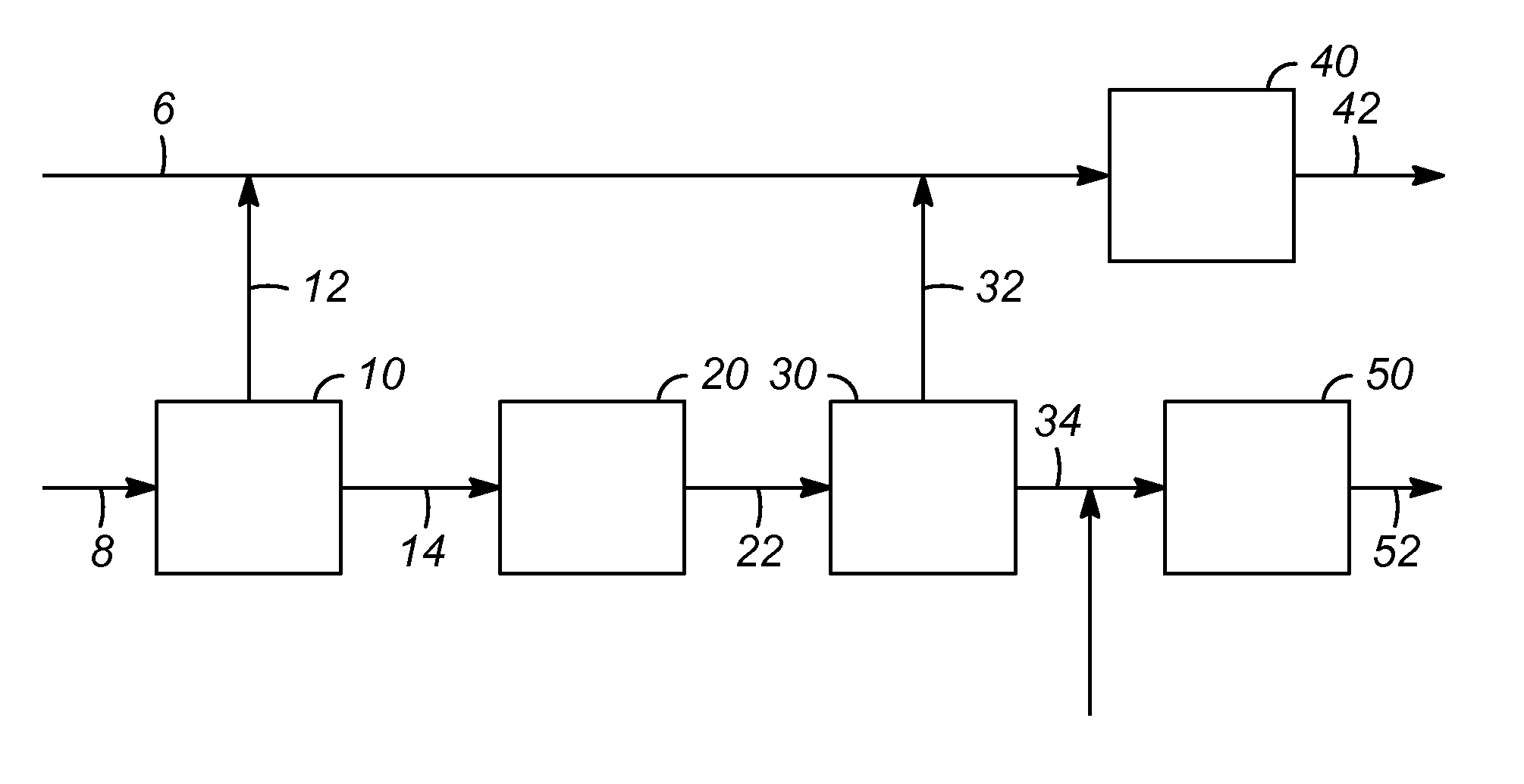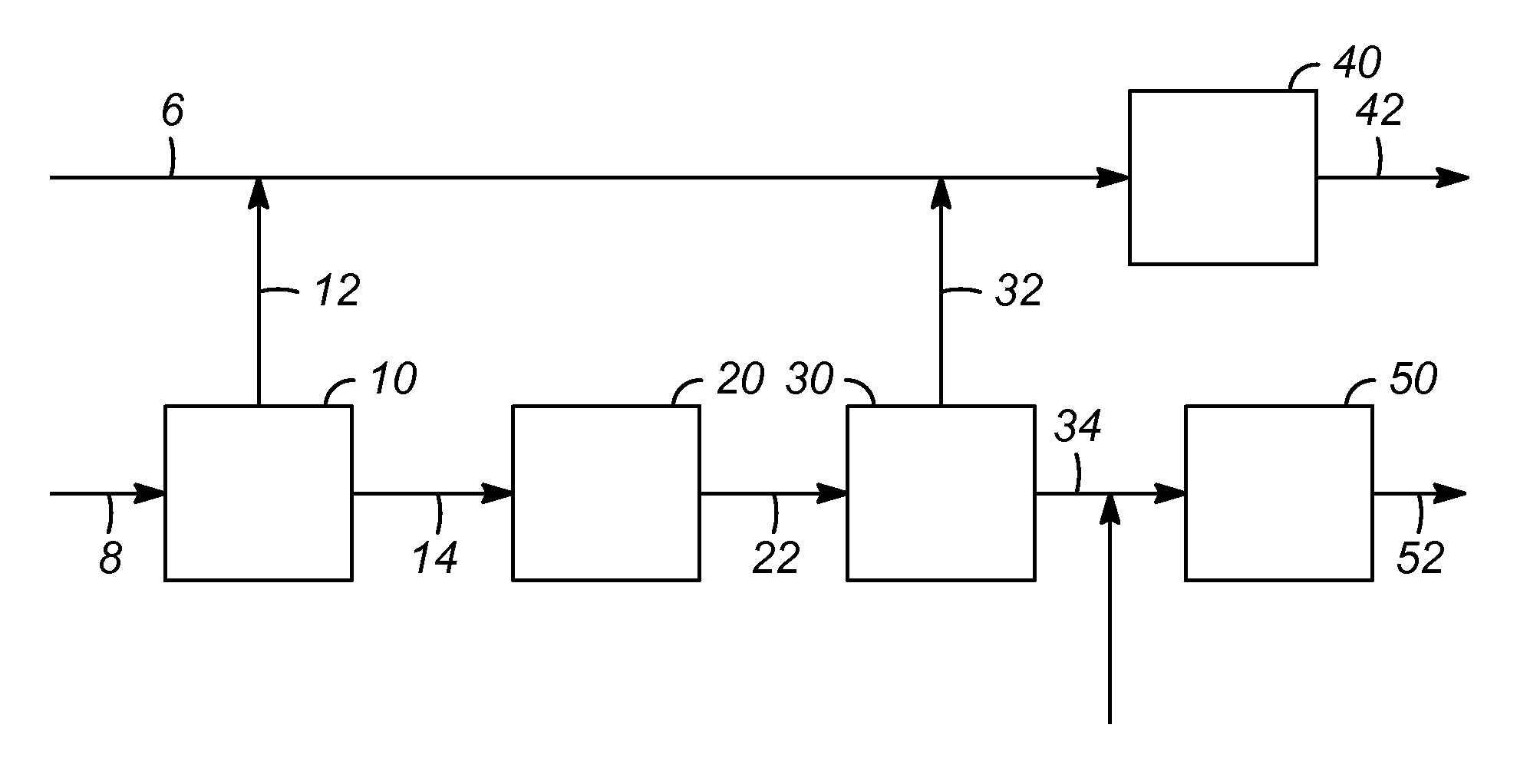Naphtha cracking
a technology of naphtha and cracking, applied in the field of naphtha cracking, can solve the problems of complex combination of reaction and gas recovery system of ethylene plant, and achieve the effect of improving the yield of light olefins
- Summary
- Abstract
- Description
- Claims
- Application Information
AI Technical Summary
Benefits of technology
Problems solved by technology
Method used
Image
Examples
specific embodiments
[0038]While the following is described in conjunction with specific embodiments, it will be understood that this description is intended to illustrate and not limit the scope of the preceding description and the appended claims.
[0039]A first embodiment of the invention is a process for producing light olefins comprising passing a hydrocarbon stream to a first separation column to generate a first light stream, and a first heavy stream; passing the first heavy stream to a hydrotreating unit, to generate a treated heavy stream; passing the treated heavy stream to second separation unit to generate a first extract stream comprising normal hydrocarbons, and a raffinate stream comprising non-normal hydrocarbons; and passing the first light stream and the first extract stream to a cracking unit to generate light olefins. An embodiment of the invention is one, any or all of prior embodiments in this paragraph up through the first embodiment in this paragraph further comprising passing the ...
PUM
| Property | Measurement | Unit |
|---|---|---|
| temperature | aaaaa | aaaaa |
| mole ratio | aaaaa | aaaaa |
| temperature | aaaaa | aaaaa |
Abstract
Description
Claims
Application Information
 Login to View More
Login to View More - R&D
- Intellectual Property
- Life Sciences
- Materials
- Tech Scout
- Unparalleled Data Quality
- Higher Quality Content
- 60% Fewer Hallucinations
Browse by: Latest US Patents, China's latest patents, Technical Efficacy Thesaurus, Application Domain, Technology Topic, Popular Technical Reports.
© 2025 PatSnap. All rights reserved.Legal|Privacy policy|Modern Slavery Act Transparency Statement|Sitemap|About US| Contact US: help@patsnap.com


